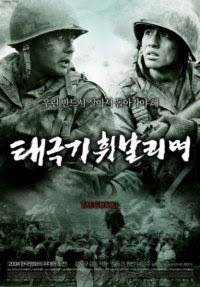 You know, I had heard this movie was melodramatic even by Korean standards, but I just couldn’t resist getting a glimpse of what Seoul might have been like during the Korean War. I did get that glimpse, but also got two hours more of absolute drivel.
You know, I had heard this movie was melodramatic even by Korean standards, but I just couldn’t resist getting a glimpse of what Seoul might have been like during the Korean War. I did get that glimpse, but also got two hours more of absolute drivel.
For those of you familiar with Korean film, let me introduce the plot.
1. Two brothers
2. Sick mother (she can’t speak)
3. One brother is a shoeshine boy who sacrifices everything so that the other brother can go to school
4. Other brother has a heart condition.
5. Many opening scenes of them eating ice cream together, riding on the trolley together, laughing and running after each other.
6. Korean War breaks out
7. Younger brother and older brother are drafted and begin serving together.
8. Introduce a whole bunch of soldiers in their platoons, all of which you know will die horribly. Some don’t even have real names (Hello! I am the Radioman!) so you know they will die first.
9. Drama of war
10. Shoeshine brother becomes highly decorated killing machine so he can win the Medal of Honor to send his brother home (a deal magically worked out with the Major)
11. Shoeshine brother thinks brother was killed by fellow South Koreans so he defects (not the most linear of logic, but this is jeong (정.)
12. Older brother runs across the border to find his brother, managing to run right through the entire North Korean army without anyone recognizing he is wearing a South Korean uniform.
13. Shoeshine brother dies in his brother’s arms
If only there was a car accident and a woman hooked up to a respirator, we would have a bonafide Korean TV drama.
I heard some people refer to this movie as Saving Private Kim, but I prefer Two Affectionate Men and a War.